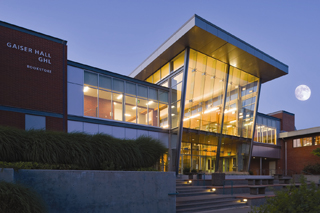|
Subscribe / Renew |
|
|
Contact Us |
|
| ► Subscribe to our Free Weekly Newsletter | |
| home | Welcome, sign in or click here to subscribe. | login |
Construction
| |
 |
August 23, 2012
5 tips to help districts with their long-range plans
LSW Architects

Wyckoff
|
It’s easy to understand how long-range facility planning can atrophy until a district is eligible for a study and survey grant from the state.
There are always immediate urgent needs to be addressed and taking the time to thoughtfully consider what the future may hold feels like a luxury districts cannot afford. With shrinking financial resources, staff reductions and increased work loads, school districts and their facilities staff are finding it increasingly challenging to invest in creating or updating their long-range planning efforts.
Yet, like taking the time to exercise, long-range facility planning will pay future dividends. A district will be in better shape to adapt to enrollment and demographic changes, capitalize on funding opportunities and see an increase in community support.
Here are a few tips to help any district achieve long-range planning results:
• It’s a team sport. Creating or updating a long-range plan is not a solo endeavor, it’s a team sport.
Your team needs a leader. Someone who can orchestrate, guide, encourage, motivate and endure. The reality that it is a team effort can also be one of the secrets to its success.
Depending on the size of the district, the task of formalizing a long-range plan typically falls in the lap of the facility director. However, given the breadth of planning considerations, it requires the involvement from administration, instruction, maintenance, local city or county, community members, business community, teachers and students.
As more stakeholders are invested and involved in the process, a shared sense of ownership and interest in future success is shared as well.
• Break the routine. This is quite possibly going to be the most challenging step towards progress.
Creating or updating a long-range plan is not a one-time event, it needs to become part of the routine. Assuming that you have a leadership role in your district, if it is not part of your routine, you need to break your routine. Set aside one hour per week to focus on your district’s long-range planning efforts.
• Know your goal. What is a long-range plan? What do you need to know? Who cares? All good questions.
Before you spend much time and resources, it is important to have at least a general understanding of what you are trying to accomplish with your long-range plan.
Consider the many forms and deliverables that will need to draw from your long-range planning efforts and the variety of audiences who will be digesting the information. For example, the state Office of Superintendent of Public Instruction’s school facilities manual does a very good job of outlining the process for advance planning as it relates to the school facilities development process. As most districts will be pursuing funding assistance from the state, it is very important to understand the process and expectations.
Additionally, your district may utilize the long-range plan as an ongoing dialog with the community, one that encourages community participation and disseminates information. Perhaps your district is pursuing other nontraditional funding for special programs or community partnerships.
Often granting agencies have their own expectations for the format and content of a long-range plan. If nothing else, develop a simple table of contents for subject areas pertinent to the elements of your long-range plan. These simple prompts can help give structure for future content.
• Work different muscles. Trainers know the value of mixing up the workout routine to keep your muscle groups activated for peak performance. It is also important to vary the focus of your long-range planning efforts.
As mentioned previously, long-range planning is a team sport. Now is a time to rely on the strengths of other team members. Harvest knowledge and information from others within the district and spend some focused time on attributes and influences of your planning that are outside of your comfort zone.
If you feel like you have a really good handle on the enrollment and demographic projections, perhaps spend some time considering the role of community partnerships. Or, if you find yourself migrating towards facility condition and the tangible aspects of utility infrastructure planning, spend some time seeking to understand the impacts of your districts educational planning and instructional methodologies.
• Make it visual. Ad agencies and neuroscientists alike know the power of visual communication.
Find a wall to permanently post your long-range planning information. A website or intranet is good too, but often too complicated to update and there’s something powerful in the tangible.
A district’s long-range-plan is ripe with data that can be easily made visual: maps, graphs, aerial photography, census information, building photographs. Market it. Be proud enough to make it look good.
Don’t wait for perfection. Remember, very little information is static — it is dynamic. Each year conditions change, enrollment changes, forecasts change.
Post what you know. Post questions of what you don’t know. It will immediately elevate the urgency of long-range thinking.
In the competition for time and resources, the urgent usually wins. Make it visual. It won’t take long before it will provide an opportunity to spark productive conversation and motivation toward future progress.
Casey Wyckoff, a principal at LSW Architects, has served pre-K, K-12 and community college educational clients throughout Washington, Oregon and Wyoming.
Other Stories:
- School contractors face new scrutiny from taxpayers
- UW’s Mercer Court aims to keep students socially connected
- Skills centers making inroads in Washington
- Schools can stretch facilities budgets by embracing technology
- Laser scanning: a powerful tool for school projects
- Portables aren’t the last word in modular schools
- Schools face pressure to keep up with tech trends
- Online learning will have lasting effect on campus spaces



